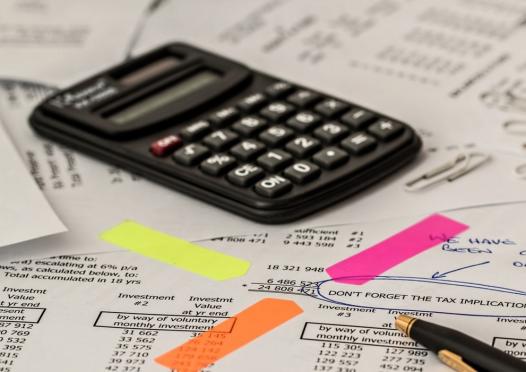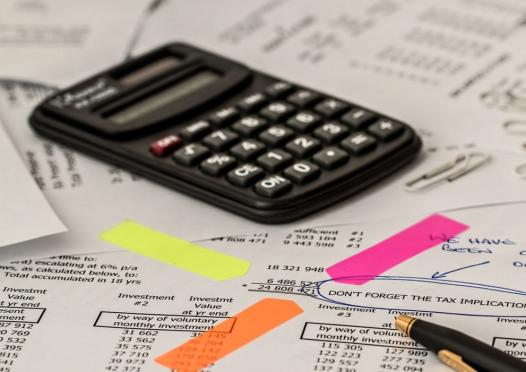ILSOYADVISOR POST
WEBINAR: Deferred Taxes: Your Balance Sheet May Not Be What You Think
As our farm businesses use tax planning tactics to reduce current tax liability impacts, we do not completely reduce the tax but move the tax to a future year. This webinar will provide details on the importance of identifying and calculating your operation’s deferred tax liability and how that can affect your current and future strategic farm management decisions.
Presenter: Dick Wittman, Wittman Consulting, Farm Manager/Family Business Consultant, and Todd Doehring, Centrec Consulting Group, Director
Dick Wittman is a former manager and board chair of a 20,000-acre Idaho family farm partnership involving crops, cattle and timber and provides consulting services in family farm business and financial management in the U.S. and abroad. A former FCS lender, Wittman has also served on numerous commodity and financial institution boards, is a director and past president of the Farm Financial Standards Council and past president/founding member of the PNW Direct Seed Association. He is an adjunct faculty member of Texas A&M University teaching annually at the TEPAP Executive program and King Ranch Institute.
Todd Doehring is a director at Centrec Consulting Group, LLC, and has been with the firm since 1991. Centrec has worked extensively in the food and agriculture sector since its founding in 1983, including considerable research activities with producer groups, data analytics, and quantitative economic analysis. During his professional career, Doehring has led numerous projects and activities, including development of analytical tools/models, financial and economic assessment, data analysis/modeling and visualization, economic and market analysis, strategic planning, value chain analysis, client advisory roles, project management, educational program development and delivery of classroom-based training. Doehring earned a bachelor's and master's degree in agricultural economics from the University of Illinois.
Download Doerhing's and Wittman's PowerPoint Presentation.
Download the Deferred Tax Estimation Spreadsheet.
- Two different levels of unrealized gain
- Difference between current assets/liability and base values of breeding stock, machinery and equipment
- This difference is deferred tax, which will result in an adjustment to accrual net income
- Difference between cost (book value) and market value of fixed assets
- This difference is estimated tax, which will affect net worth reconciliation, not accrual net income
- Difference between current assets/liability and base values of breeding stock, machinery and equipment
- Good management practice = Make valuation equity transparent
- Unrealized gain (valuation equity and deferred income) = 43% of total equity value
- Items that contribute to deferred income and tax:
- Difference of carrying (book) value over tax basis
- Deferred income items (Current assets that are taxable when sold or converted to cash)
- Including commodities, accounts receivable, prepaid expenses, hedging equity, cash investment in growing crop
- Deferred expense items (Current liabilities that are deductible when paid)
- Including accounts payable, accrued interest, property taxes, estimated federal and state income and payroll taxes, unearned government payments
- Book (base) value vs. tax basis
- I.e., breeding stock machinery/equipment, buildings and improvements
- Items that contribute to valuation equity and estimated tax:
- Difference between market value and book (base value)
- This includes breeding stock, machinery and equipment
- This difference results in the valuation equity portion of net worth
- Difference between market value and book (base value)
- Three column balance sheet is ideal (Look for accounting systems that can deliver all three sets of values)
- Tax/cost basis
- Accrual/book value
- Market value
- Where should deferred tax be recorded?
- Two options
- Record on the balance sheet as deferred and estimated tax liability
- Pros – More realistic presentation of net worth for owners’ evaluation of retirement wealth, buyouts and transition
- Cons: Bankers don’t like this as it distorts serviceable debt, financial rations and credit scoring models
- Record as a footnote to financial statements
- Pros: Discloses potential liability that exists, acknowledges the amount is not an exact science (tax laws subject to change, death can erase or reduce tax)
- Cons: Tends to overstate recognizable equity on primary financial statements
- Record on the balance sheet as deferred and estimated tax liability
- Two options
- Deferred taxes calculation takes into account:
- Deferred taxes of current assets less current liabilities (will affect earnings)
- Deferred taxes of book/tax differences
- Estimated income taxes from valuation equity (difference between market value of land and machinery less the book value)
- Deferred income tax will affect reported earnings of the operation
- Estimated income tax is the portion of the valuation gained and will affect earnings
- Income statement
- Income tax expense is the amount on the balance sheet that was paid that year
- Increase (decrease) in deferred taxes affects balance sheet
- A balance sheet should represent what we own and what we owe at any given time
- You may not plan to liquidate, but if you were, what would you owe, which is what you want to get at with deferred tax and estimate income tax
- Statement of net worth
- Important statement in agriculture because it reconciles market net worth from one balance sheet to the next
- Brings in what you earn on an accrual basis and how much valuation equity you have
- In absence of deferred tax, would see gross numbers, which is overreporting true equity
- Important statement in agriculture because it reconciles market net worth from one balance sheet to the next
- Deferred tax schedule has three essential components
- Net realizable value (NRV) tax difference (current assets minus deductible current liabilities)
- Estimated federal income tax rate is included as well as self-employment tax
- At this point, you are trying to figure out how much on your balance sheet is taxable
- This number won’t show up on the balance sheet, it is one component of deferred tax
- Book (base value) tax differences
- Difference between book value and tax value
- Using the same federal and state income tax rate, add to the value from the NRV
- This is the amount that shows up on the balance sheet and impacts earnings
- Estimate taxes related to valuation equity
- This is the market/book difference, which will be a capital gain
- Big component is real estate/land
- Use 25% capital gains tax rate to estimate income tax payment
- This number doesn’t affect earnings but allows you to reconcile balance sheet and lower net valuation equity
- This is the market/book difference, which will be a capital gain
- Net realizable value (NRV) tax difference (current assets minus deductible current liabilities)
- Earnings impact of deferred taxes
- Bring in total values from the three sections
- $ amounts of deferred income/taxes
- Putting deferred taxes on the balance sheet doesn’t affect assets, but it will affect liability and equity
- This is a good number to put on balance sheet because it shows what you really owe
- Putting deferred taxes on the balance sheet doesn’t affect assets, but it will affect liability and equity
- Liabilities and equity
- Adding deferred taxes to the balance sheet, your net worth drops and liabilities increase
- Conclusions
- Based on the definition of a balance sheet, deferred and estimated income taxes should be included on agricultural balance sheets
- No impact on liquidity, but can greatly impact solvency
- Impacts profitability by matching income taxes owned with income earned
- Critical issue for estate, retirement planning and business valuation





Comments
Add new comment